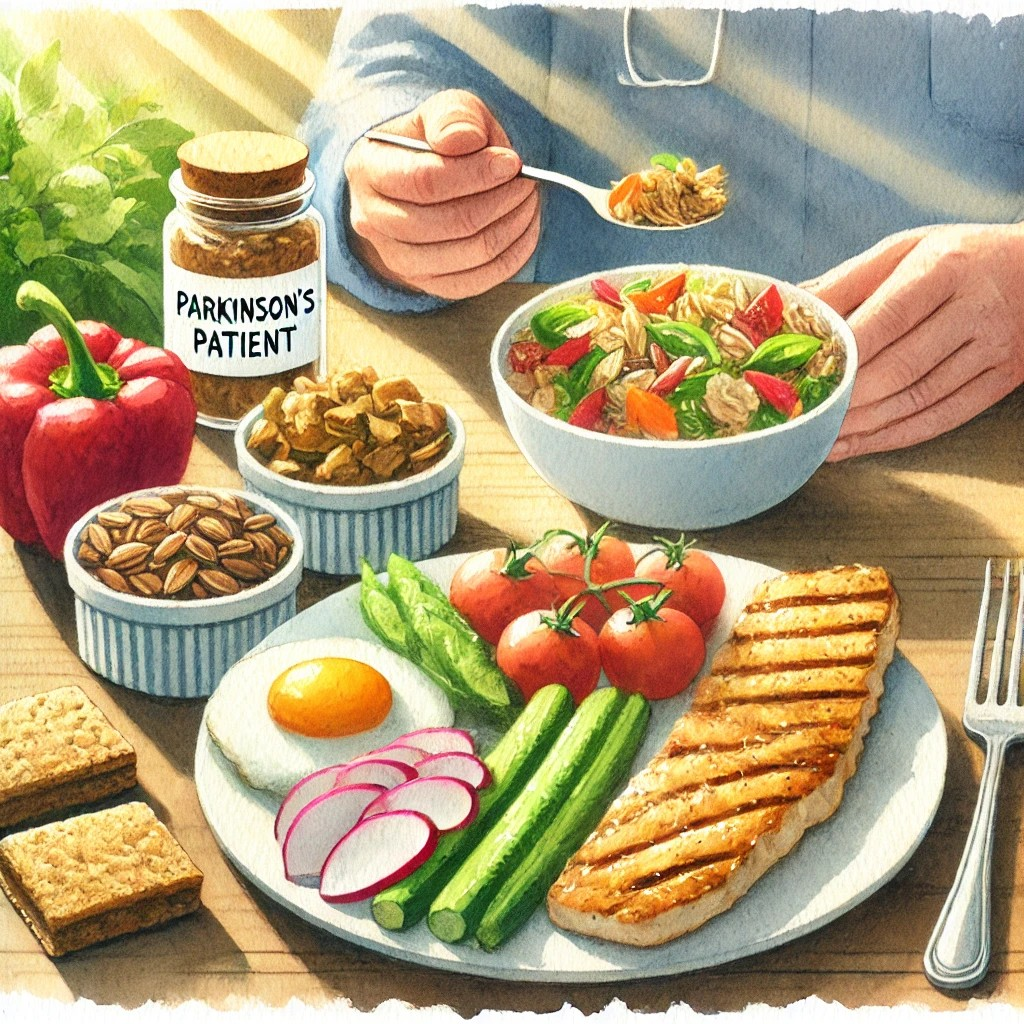Title: Protein and Parkinson’s: A Balancing Act

In managing Parkinson’s disease (PD), the role of diet, especially protein intake, is often overlooked. Proper nutrition is essential for maintaining strength, muscle mass, and overall health. However, when it comes to Parkinson’s, the timing and amount of protein consumption play a crucial role in symptom management. This blog post delves into the relationship between protein intake and Parkinson’s, and how to strike a balance for optimal health and medication efficacy.
Understanding Protein Deficiency and Its Impact on Parkinson’s
Protein is a vital nutrient required for the body’s structural and functional maintenance. It supports muscle mass, bone density, and immune function. For individuals with Parkinson’s, ensuring adequate protein intake is crucial, as the disease itself can lead to muscle weakness and fatigue. Moreover, a lack of protein can exacerbate these symptoms, further affecting the patient’s quality of life.
Signs of Protein Deficiency:
- Edema (Swelling): Protein helps maintain the balance of fluids in the body. A deficiency can lead to swelling, particularly in the legs and feet, which can be mistaken for a complication of Parkinson’s.
- Muscle Loss: Without adequate protein, the body begins to break down muscle tissue for its needs, leading to increased muscle weakness and loss of physical strength.
- Skin and Hair Changes: Protein is essential for healthy skin and hair. A deficiency can cause brittle hair, dry skin, and even hair loss.
- Increased Susceptibility to Illness: Protein is crucial for immune function. Insufficient intake can weaken the immune system, making it harder for individuals to fight off infections.
Protein and Levodopa: Finding the Balance
One of the unique challenges for people with Parkinson’s is managing their protein intake in relation to their medication. Levodopa, the primary drug used to manage Parkinson’s symptoms, competes with dietary protein for absorption in the small intestine. This competition can reduce the effectiveness of the medication, leading to increased symptoms, particularly during “off” periods when medication effectiveness wanes.
Tips for Balancing Protein and Medication:
- Medication Timing: Take levodopa 30-60 minutes before meals to ensure it is absorbed before dietary protein.
- Evening Protein: Some individuals find it beneficial to consume the majority of their protein in the evening when their medication schedule is less active.
- Monitor and Adjust: Keep a diary of food intake and medication schedules to track which combinations work best for symptom management.
Optimizing Protein Intake
Despite the need to time protein carefully, it remains essential for overall health. Both animal and plant-based sources of protein can be included in a balanced diet.
Recommended Sources of Protein:
- Animal-Based: Lean meats, poultry, fish, eggs, and low-fat dairy products.
- Plant-Based: Legumes, tofu, tempeh, quinoa, nuts, and seeds.
The Role of Complementary Strategies
Managing protein intake is just one aspect of dietary management in Parkinson’s. Incorporating complementary strategies such as regular exercise, adequate hydration, and stress management techniques can further improve the overall quality of life.
Additional Considerations:
- Exercise: Regular physical activity helps maintain muscle mass and reduces the impact of protein deficiency.
- Hydration: Proper hydration supports digestion and overall well-being.
- Mindful Eating: Being mindful of what, when, and how much you eat can help maintain a balanced diet and avoid unnecessary protein competition with medication.
Final Thoughts
Balancing protein intake with Parkinson’s treatment can be challenging, but it’s a crucial component of effective disease management. Understanding the role of protein, recognizing the signs of deficiency, and strategically timing meals can help optimize medication efficacy and overall health.
SEO Keywords: Parkinson’s diet, protein and Parkinson’s, managing protein intake Parkinson’s, levodopa absorption diet, signs of protein deficiency in Parkinson’s.
Disclaimer: AI-generated medical content is not a substitute for professional medical advice or diagnosis; I hope you found this blog post informative and interesting. www.parkiesunite.com by Parkie.
DALL-E Prompt: “A watercolor painting of a balanced meal for a Parkinson’s patient, featuring lean protein sources such as grilled chicken and tofu, colorful vegetables, and a small portion of whole grains. The setting is a peaceful kitchen table with warm natural light, symbolizing a thoughtful and balanced approach to nutrition.”